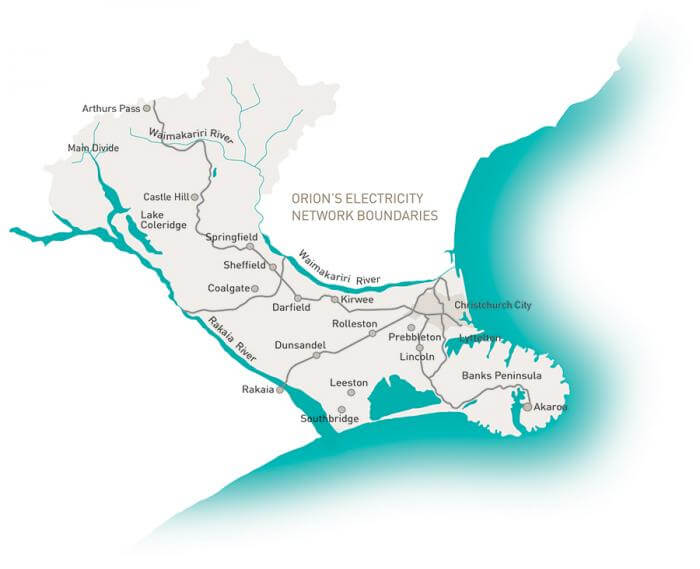Tornado radios – resilient radio network during natural disasters
With extreme weather events on the rise, deploying a resilient radio network which has already proven itself during natural disasters

In February 2011, a 6.3 magnitude earthquake struck the city of Christchurch, New Zealand. Centered directly under the city, the quake and ensuing aftershocks caused catastrophic infrastructure damage and, sadly, loss of life. Power and landline communications ceased across most of the city and cellular communications rapidly became congested. As a result, much of the commercial, industrial and residential areas of the city were without power and voice communications for many days.
Utility company, Orion, is responsible for power distribution in Christchurch and surrounding areas. Utilizing an independent, hardened private communications network with redundancy built into their network via Mimomax UHF IP radios was at the core of Orion’s service continuity in the hours and weeks after the earthquake struck.
“The earthquakes simply confirmed our choice of UHF IP radios as a mission-critical communications solution. There was, and still is, no other alternative.”
Neville Digby, Senior Systems Engineer at Orion
When the earthquake struck, severe damage was inflicted on Orion’s electrical and communications networks in areas across the city. Massive earth movement had stretched some underground cables up to 1 meter and caused more faults in a matter of minutes than would normally have been experienced in a decade. Four substations received significant damage and some network equipment was buried under rubble in the central business district, damaged by falling debris or flooded when the quake caused a soil phenomenon called liquefaction. As a result, much of this network equipment was instantly rendered non-functional.
Orion’s communication network comprised of underground copper SDSL and fiber-optic cables combined with the UHF IP radios from Mimomax. The copper cables being smaller and more malleable fared better than the fiber-optics. However, the utility experienced damage to around 10% of the copper cables in addition to an even higher percentage for their fiber. Several areas in the network were therefore inaccessible and critical SCADA communications were prevented. Aiming to restore functionality to areas with no visibility, Orion attempted to connect in to their sites using the public cellular network. Heavy use of cellphones by the public, however, had led to severe congestion and cell tower sites had a limited capacity to operate from their reserve power until the electricity network could be restored.
“Because our wireless radios operate in licensed UHF frequencies and have relatively widebeam antennas, antenna towers can be skewed up to 45-degree angles and still retain functionality.”
Neville Digby, Senior Systems Engineer at Orion
Seamless communications across the grid is at the heart of successful service provision for any utility. One of the predominant challenges Orion faced when specifying their network requirements was the need to transmit SCADA IP data through wireless links, over long distances, as rapidly as possible. They also had a desire to optimize their available narrowband spectrum as well as build in redundancy to their communications network.
The industry-leading spectral efficiency and ultra-low latency offered by the UHF radios from Mimomax were a good fit to meet Orion’s standard operational requirements in addition to providing an alternative communication network.
“In some areas, the shaking was so violent wires were simply pulled off poles and the boards of houses.”
Roger Sutton, former CEO at Orion
Immediately after the earthquake, while some of the wired communications equipment in parts of Orion’s network had been damaged beyond functional tolerances, the radios provided by Mimomax continued to perform.
The 2011 earthquake demonstrated that radio communication solutions continued to operate when underground fiber, public cellular and microwave solutions were severely impacted by the disaster. Throughout the emergency phase, Orion was able to maintain control of their infrastructure and their workforce via their hardened, privately-owned communications network.
Location: Christchurch, New Zealand
Industry: Electric Utility
Services: Orion owns and operates one of the largest electricity distribution networks in New Zealand, providing power to 200,000 residential and business customers.
Our robust communication solutions are deployed across the globe in point-to-point and point-to-multipoint configurations to support industrial infrastructure for Utility, Oil and Mining companies and to provide linking for Public Safety and Transport organisations.